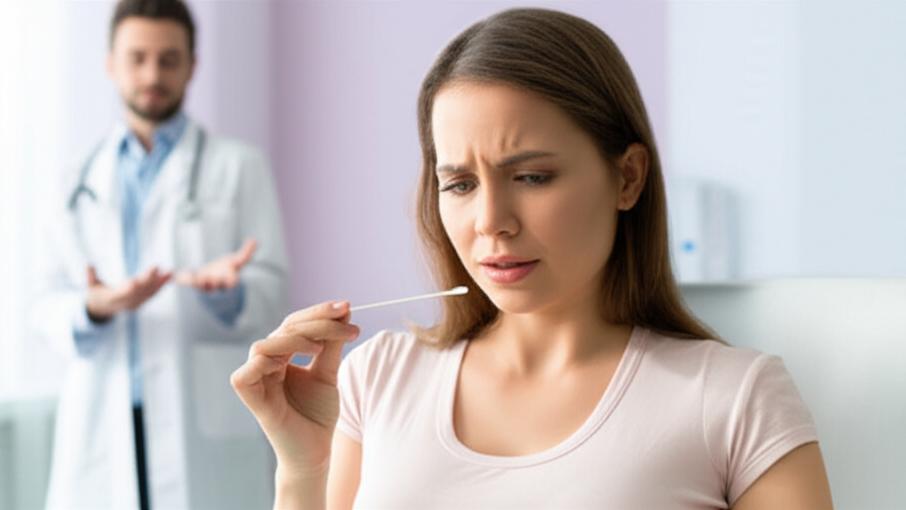I remember a wonderful couple in my office, just weeks away from meeting their baby. They knew a C-section was likely, and they came in with a question I’m hearing more and more. “Doctor,” the mom-to-be asked, holding up her phone, “what do you think about vaginal seeding?” It’s a topic that’s all over parenting blogs and forums, and I get it. You want to give your baby the absolute best start in life, and the idea behind this practice sounds so natural and intuitive.
So, let’s talk about it, parent to parent, doctor to patient. What is this practice, what are the hopes behind it, and what are the risks we absolutely have to consider?
What Exactly Is Vaginal Seeding?
At its core, the idea is simple. When a baby is born vaginally, they get a full coating of their mother’s vaginal fluids. These fluids are teeming with bacteria and other microbes. Vaginal seeding—sometimes called microbirthing—is an attempt to mimic this process for babies born by cesarean section.
The procedure involves taking a sterile piece of gauze, letting it soak up vaginal fluids for about an hour before the C-section, and then wiping that gauze over the baby’s mouth, face, and body shortly after birth. The goal is to transfer that community of microbes to the baby.
The Microbiome: Your Baby’s First Friends
Why would anyone want to do this? It all comes down to a fascinating concept called the microbiome. Think of it as a tiny, bustling city of organisms (bacteria, fungi, viruses) living on and inside you. A healthy microbiome helps train our immune system, digest food, and protect us from disease.
A baby gets their first “starter kit” of these microbes during birth.
- Vaginal Birth: The baby travels through the birth canal, getting a healthy dose of mom’s vaginal microbiome.
- C-Section Birth: The baby is delivered from a sterile environment and their first contact is often with skin bacteria, which is a different mix.
Some research has noticed that babies born via C-section have a slightly higher risk of developing conditions like asthma, allergies, and eczema later in life. The theory is that this difference in the early microbiome might play a role. But here’s the key word: theory. We don’t have proof that the different microbiome is the direct cause, or that vaginal seeding can prevent these issues.
The Big Question: Is Vaginal Seeding Safe?
This is where, as your doctor, I have to be very clear and honest. While the idea is interesting, the practice carries some very real dangers. Not all the bacteria in the vagina are friendly. Transferring them without screening can expose a vulnerable newborn to serious, and sometimes life-threatening, infections.
The American College of Obstetricians and Gynecologists (ACOG) and other major medical bodies currently recommend against vaginal seeding outside of a formal research study due to these safety concerns.
To be perfectly clear, here are some of the dangerous microbes that could be passed to your baby through this practice.
| Potential Infection | What It Can Cause in a Newborn |
|---|---|
| Group B Streptococcus (GBS) | A very common bacteria in adults that can cause sepsis (blood infection), pneumonia, and meningitis in babies. It can be devastating. |
| Herpes Simplex Virus (HSV) | Can cause a widespread, life-threatening infection in a newborn, affecting their organs and brain. |
| Chlamydia & Gonorrhea | These can lead to serious eye infections (conjunctivitis) and even pneumonia in a newborn. |
If you ever do this on your own and your baby develops symptoms like fever, poor feeding, a skin rash, coughing, or seems unusually sluggish, you must call your pediatrician immediately.
Safer Ways to Build a Healthy Microbiome
The good news? There are powerful, proven, and completely safe ways to give your C-section baby a fantastic microbial start. You don’t need to risk vaginal seeding.
- Skin-to-Skin Contact: As soon as you can after birth, hold your baby directly against your bare chest. Your skin has its own unique, healthy community of microbes that are perfect for your baby. It’s also incredible for bonding and regulating their temperature and breathing.
- Breastfeeding: This is nature’s perfect “seeding.” Breast milk is not sterile; it’s a living fluid packed with beneficial bacteria, custom-made sugars that feed those good bacteria, and antibodies from you that protect your baby. The skin of the nipple also contributes to the baby’s developing microbiome.
These two things—your touch and your milk—are the most powerful tools you have.
Take-Home Message
- What It Is: Vaginal seeding is the practice of swabbing a C-section baby with the mother’s vaginal fluids to try and establish a healthy gut microbiome.
- The Theory: The hope is to mimic the microbial exposure of a vaginal birth and potentially lower the risk of future allergies or asthma.
- The Risk is Real: It can transfer dangerous bacteria and viruses like GBS and herpes to a vulnerable newborn, causing serious illness.
- Expert Advice: Major medical organizations strongly advise against it because the risks are known and the benefits are unproven.
- What Truly Works: The best and safest ways to support your baby’s microbiome are immediate skin-to-skin contact and breastfeeding.
In the end, every parent wants a healthy, thriving child. It’s wonderful that we’re thinking so deeply about the very first moments of life. But for now, the science is clear: the potential harms of vaginal seeding far outweigh the unproven benefits. Your love, your touch, and your milk are the most powerful and perfect “seeds” you can possibly give.


